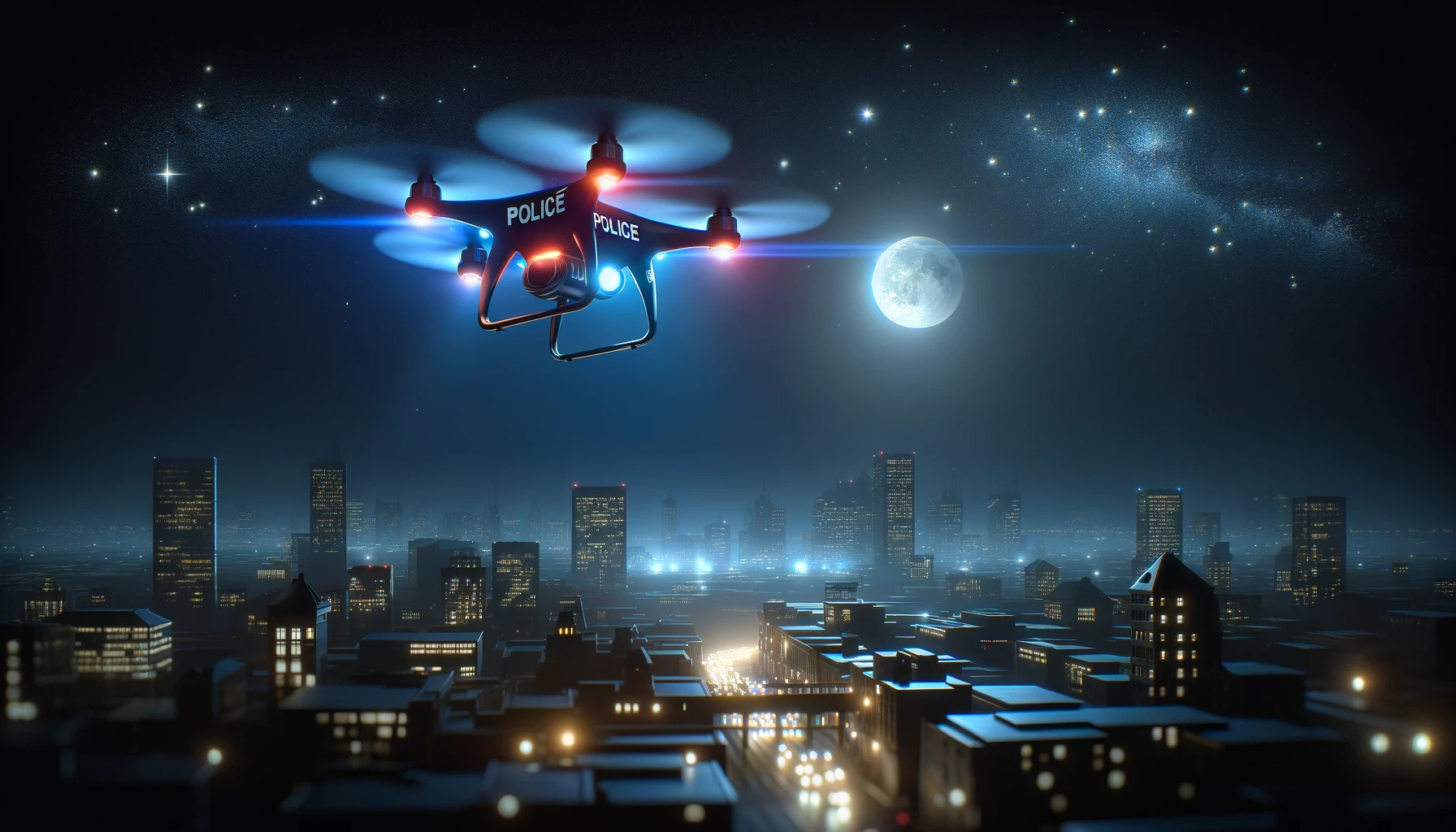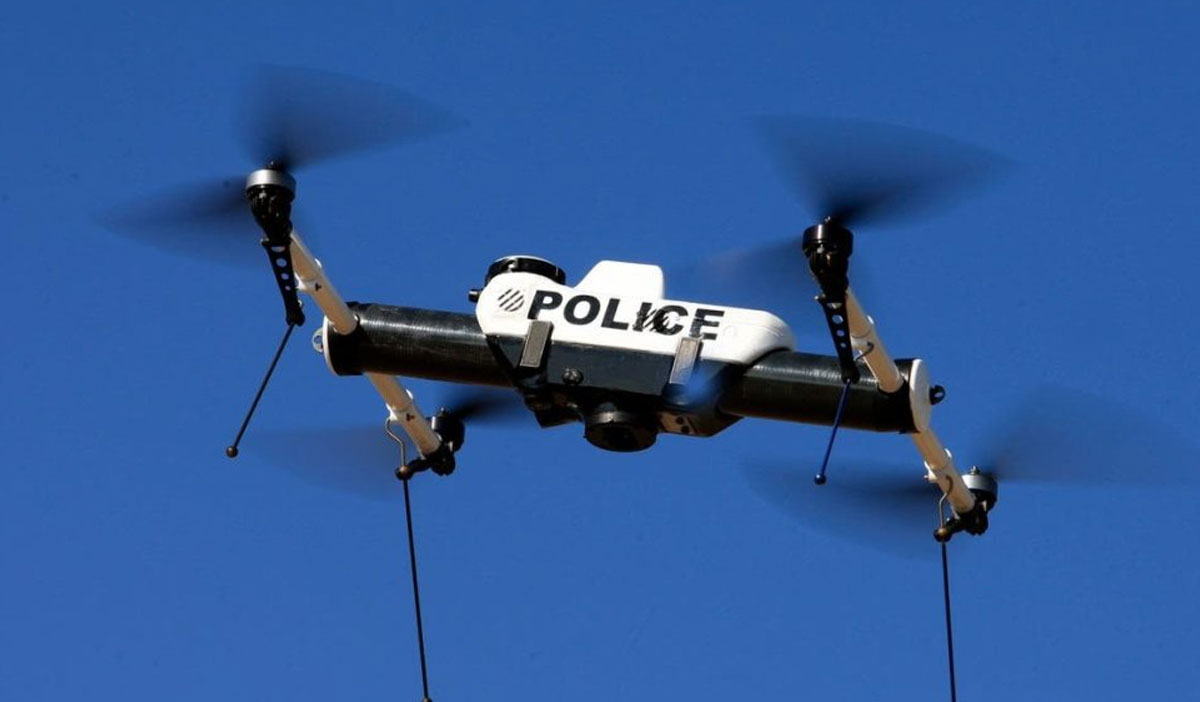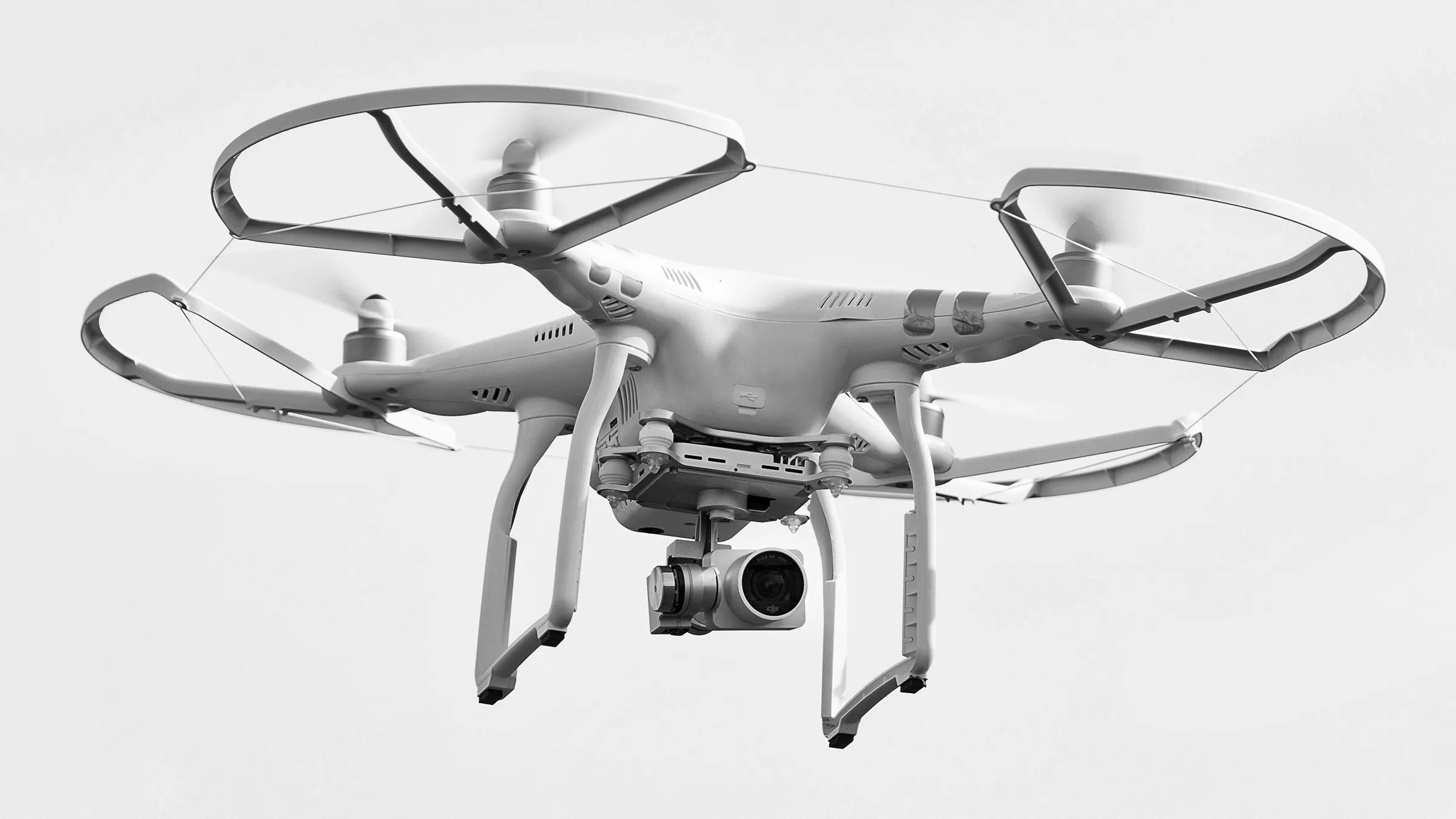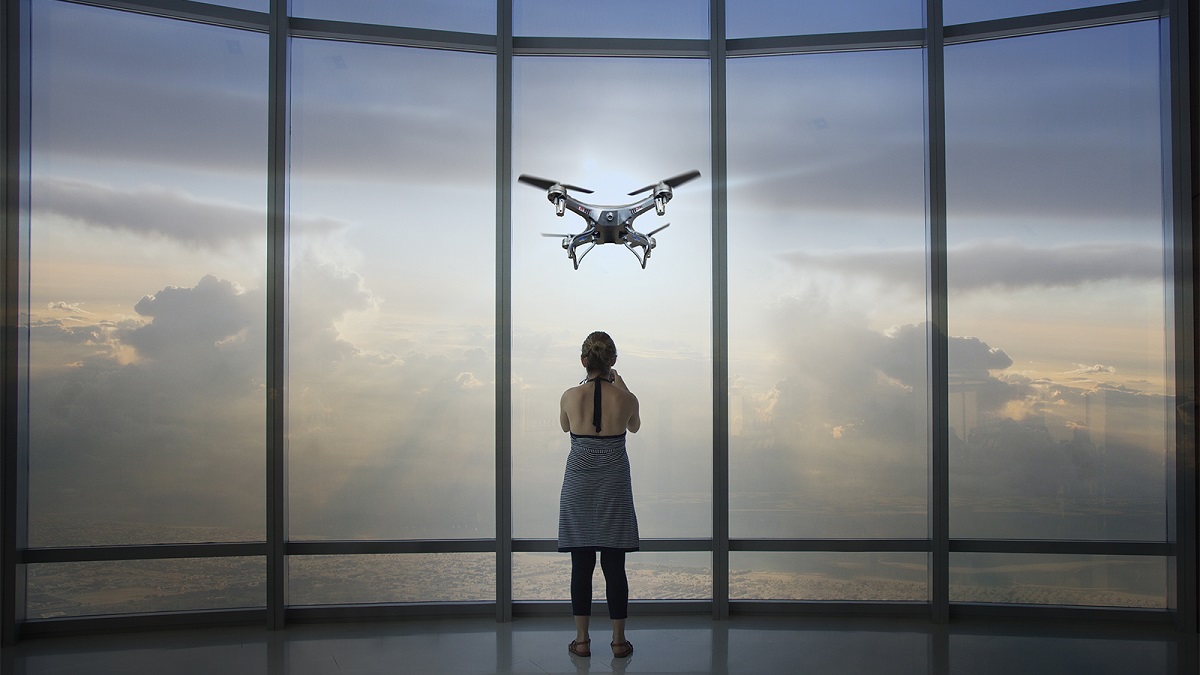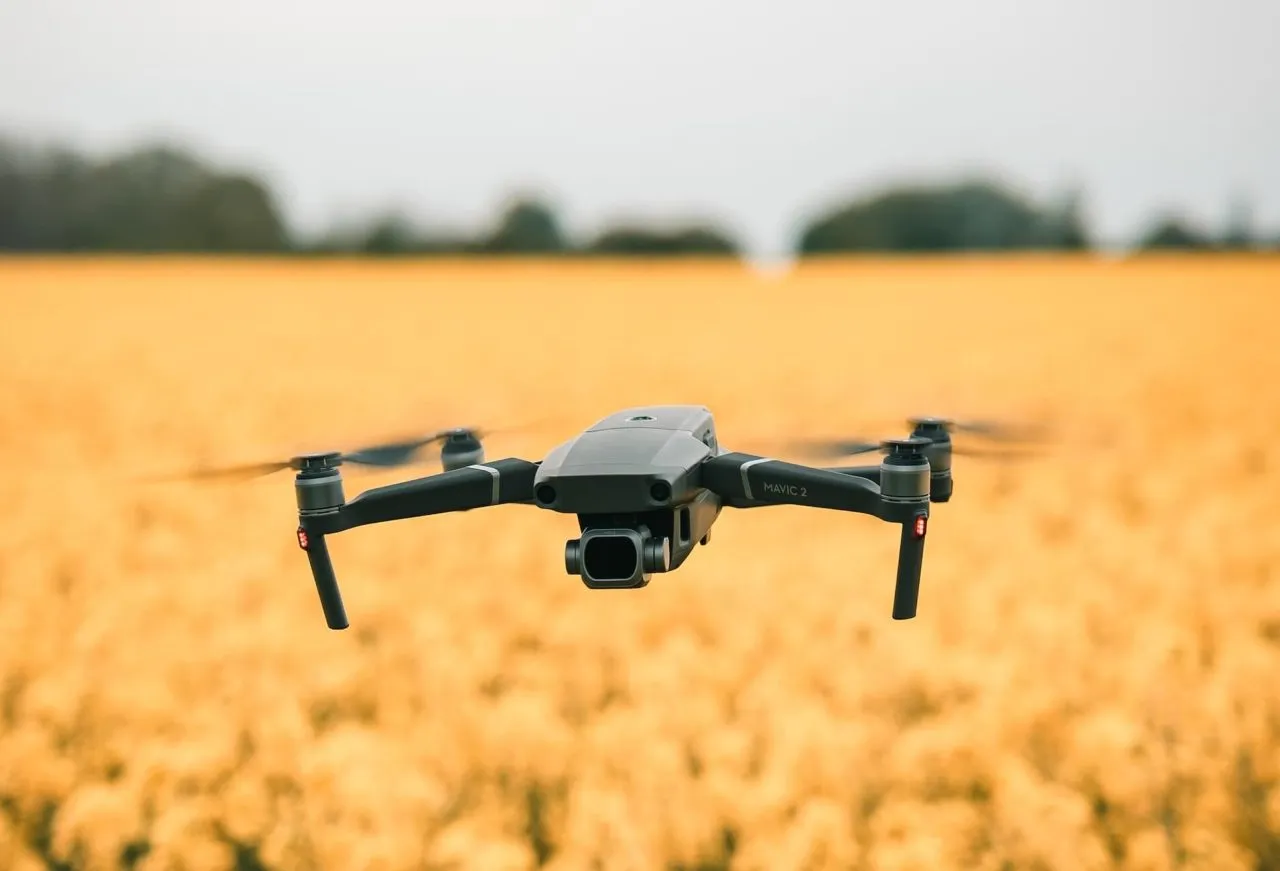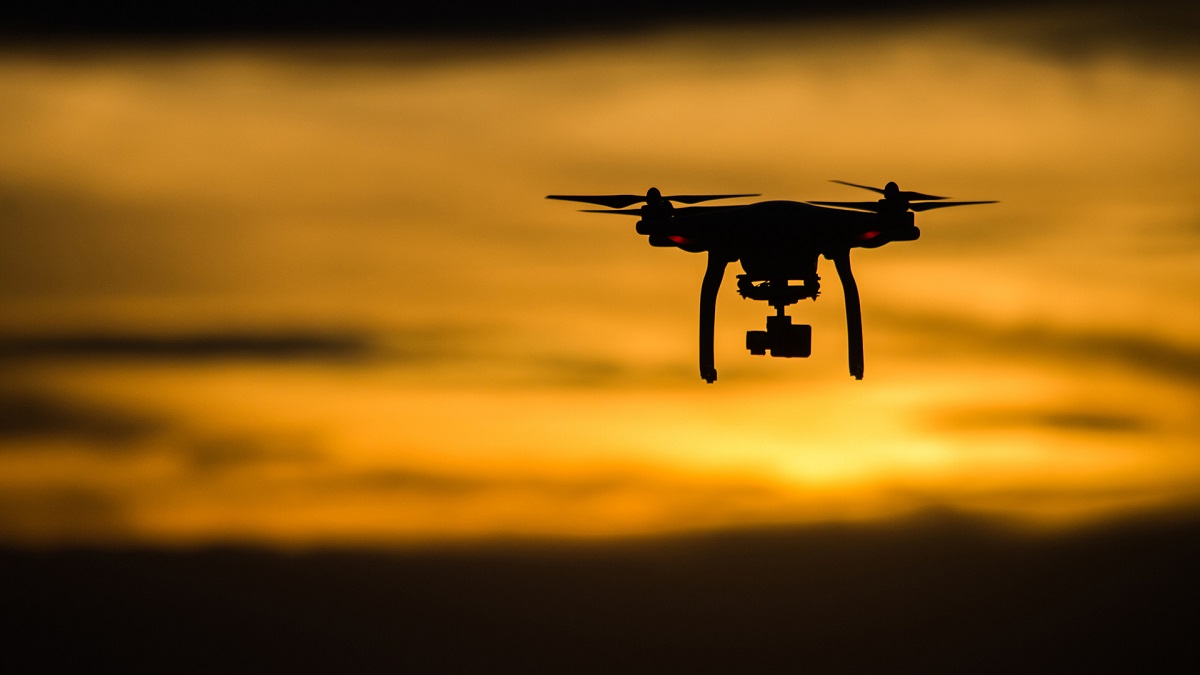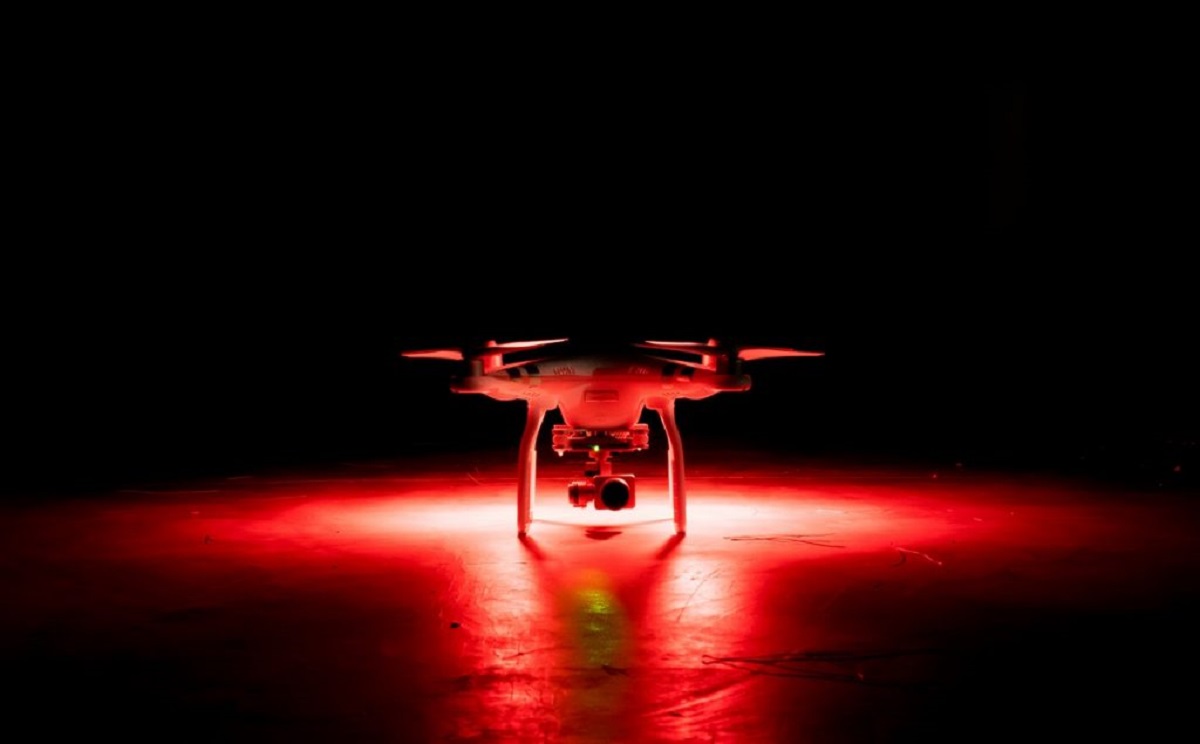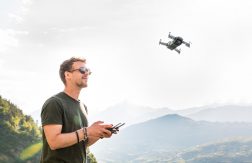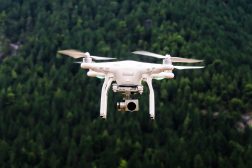Introduction
When it comes to law enforcement, technology plays a crucial role in enhancing the effectiveness and efficiency of operations. One such technological advancement is the use of police drones. These unmanned aerial vehicles (UAVs) have revolutionized the way law enforcement agencies conduct surveillance, reconnaissance, and search-and-rescue missions. While police drones are commonly used during daylight hours, their utilization at night has become increasingly prevalent.
The cover of darkness provides a unique advantage for police drones. With their advanced cameras and infrared capabilities, these drones can navigate low-light environments and detect even the slightest movement or heat signature. This makes them an invaluable tool in apprehending suspects, monitoring illegal activities, and ensuring public safety during nocturnal hours.
However, as citizens, it is important to be aware of police drone activity, especially at night. Knowing how to identify and distinguish a police drone from a regular recreational drone can help alleviate any privacy concerns and ensure that the technology is being used responsibly. This article aims to provide you with the essential knowledge needed to spot a police drone at night and understand its features and purpose.
It is crucial to understand that police drones serve a vital role in enhancing public safety. By being informed about their presence, we can contribute to a safer and more secure community. So, let’s dive in and explore the world of police drones and how to spot them during the night.
The Basics of Police Drones
Police drones, also known as law enforcement drones or public safety drones, are unmanned aerial vehicles specifically used by law enforcement agencies for various purposes. These drones are equipped with advanced technology and features that allow them to assist in a wide range of law enforcement activities.
The primary function of police drones is surveillance and reconnaissance. They are used to gather real-time aerial footage of crime scenes, accident scenes, and other areas of interest. By capturing high-resolution images and videos, police drones provide valuable visual information that aids in investigations and decision-making processes.
Furthermore, police drones are equipped with advanced cameras and sensors that can capture images in different lighting conditions, including low-light environments. This allows law enforcement agencies to effectively carry out their operations at night when visibility is limited.
In addition to surveillance, police drones are also used for search-and-rescue missions. These drones can quickly cover large areas and search for missing persons or suspects in remote or challenging terrains. By providing an aerial perspective, they can significantly speed up the search process and increase the chances of a successful outcome.
Moreover, police drones often have built-in thermal imaging technology, which allows them to detect heat signatures. This is particularly useful in scenarios where suspects are trying to hide or escape during the night. The thermal imaging cameras can identify heat patterns, making it easier for law enforcement personnel to locate individuals or track their movements.
Another notable feature of police drones is their ability to transmit real-time video feeds to the command center or officers on the ground. This live-streaming capability allows law enforcement agencies to have a immediate and up-to-date visual representation of the situation, which helps in coordinating resources and making informed decisions in real-time.
Overall, police drones are powerful tools that law enforcement agencies utilize to enhance their capabilities and improve public safety. Their versatility, advanced technology, and ability to operate during the night make them an invaluable asset for law enforcement operations.
Differences Between Police Drones and Regular Drones
While police drones and regular recreational drones share some similarities, there are distinct differences that set them apart. Understanding these differences is crucial for identifying and distinguishing police drones from regular drones, especially at night when their presence might raise privacy concerns. Let’s explore the key factors that differentiate police drones from their recreational counterparts.
1. Purpose: The primary purpose of police drones is for law enforcement activities, such as surveillance, reconnaissance, and search and rescue. Regular recreational drones, on the other hand, are used for hobbies, aerial photography, and videography.
2. Specialized Features: Police drones are equipped with advanced technology and features that are specifically designed to aid law enforcement operations. These include high-resolution cameras, infrared capabilities, thermal imaging, and live-streaming capabilities. Regular drones usually have basic cameras and lack the specialized features found in police drones.
3. Liability and Regulations: Law enforcement agencies have specific guidelines and regulations they must follow when operating drones. Police drones are registered and operated by authorized personnel who adhere to these regulations. Regular drones have their own set of regulations, but they are generally less stringent, allowing hobbyists and enthusiasts to operate them with fewer restrictions.
4. Appearance: Police drones often have a distinct appearance that sets them apart from regular recreational drones. They may be larger in size, have a matte finish, and have markings or colors that identify them as law enforcement drones. Regular drones come in various shapes, sizes, and colors, depending on their recreational purpose.
5. Flight Patterns: Police drones typically follow predefined flight paths as directed by law enforcement agencies. They operate following strict protocols and guidelines to ensure their effectiveness and safety. Regular recreational drones, on the other hand, are operated freely by the pilot and can be seen maneuvering in different directions.
By recognizing these differences between police drones and regular drones, you can better identify and distinguish a police drone when observing aerial activities at night. It is important to remember that the presence of police drones is ultimately aimed at enhancing public safety and should be treated with respect and cooperation.
Why Police Drones are Used at Night
The use of police drones during nighttime operations has become increasingly common, and for good reason. The cover of darkness provides unique advantages and opportunities for law enforcement agencies to carry out their duties effectively. Let’s explore some of the reasons why police drones are used at night.
1. Enhanced Surveillance: Nighttime operations present challenges for law enforcement due to reduced visibility. However, police drones equipped with advanced cameras and infrared capabilities excel in low-light conditions. They can capture clearer images and detect heat signatures, allowing law enforcement agencies to monitor activities and identify potential threats more effectively.
2. Reduced Risk: Criminal activities often occur under the cover of darkness, and law enforcement personnel face increased risks during nighttime operations. By deploying drones, law enforcement agencies can gather crucial information and conduct surveillance without directly exposing officers to potential dangers. Drones act as an extra set of eyes, providing valuable insights while minimizing risk to personnel.
3. Quick Response and Mobility: Police drones are agile and have the ability to reach areas that may be challenging to access by ground units. During nighttime operations, drones can respond swiftly to incidents, providing real-time situational awareness to law enforcement personnel. This allows for rapid deployment of resources and efficient decision-making, resulting in improved response times and better outcomes.
4. Covert Operations: In certain law enforcement scenarios, maintaining a covert presence is crucial. Police drones can operate in a discreet manner, thanks to their small size and low noise levels. This allows them to observe and gather intelligence without alerting suspects or compromising ongoing operations. The element of surprise provided by drones can significantly enhance the effectiveness of police interventions during nighttime operations.
5. Search and Rescue: Nighttime search and rescue missions can be particularly challenging due to the limited visibility. Police drones equipped with thermal imaging technology can locate missing persons or suspects by detecting their body heat signature. This helps search and rescue teams direct their efforts more efficiently, increasing the chances of a successful rescue or apprehension.
By utilizing police drones during nighttime operations, law enforcement agencies are able to leverage the advantages offered by advanced technology, provide greater safety for their personnel, and enhance their effectiveness in combating crime. It is important to recognize the valuable role that police drones play in ensuring public safety, even during the dark hours of the night.
Identifying Police Drones at Night
Identifying and differentiating police drones from regular drones can be challenging, especially at night. However, there are several key features and indicators that can help you spot a police drone during nighttime operations. By being able to identify these distinguishing characteristics, you can alleviate any concerns about privacy and understand the purpose behind their presence. Here are some tips for identifying police drones at night:
1. Bright Lights: Police drones often have bright LED lights that serve as indicators or markers. These lights are typically red and blue, similar to the lights on a police car. If you see a drone with these colored lights blinking or flashing, it is likely a police drone.
2. Infrared Cameras: Police drones are often equipped with infrared cameras that allow them to capture video footage in low-light conditions. If you observe a drone emitting a distinct red glow, it may indicate the use of infrared technology, pointing to its law enforcement purpose.
3. Thermal Imaging: Look for drones that appear to have additional equipment or attachments that could be thermal imaging cameras. These cameras detect heat signatures, so if you spot a drone with an unusual, bulky attachment, it may indicate that it is a police drone used for night surveillance or search-and-rescue operations.
4. Flight Patterns and Behavior: Police drones typically follow specific flight patterns, often moving in a systematic and deliberate manner. If you notice a drone flying in a way that seems more controlled and purposeful compared to recreational drones, it could be an indication that it’s a police drone.
5. Markings and Color: Police drones may have identifiable markings or specific colors that distinguish them as law enforcement tools. Look for any visible markings, emblems, or words on the drone’s body, which could indicate its official use.
6. Proximity to Law Enforcement Activity: If you notice a drone hovering or circling in close proximity to an ongoing law enforcement operation, it is highly likely that it is a police drone. These drones are typically deployed to assist in situations where law enforcement intervention is required.
It’s important to keep in mind that the presence of police drones is intended to enhance public safety and aid law enforcement operations. If you have any concerns or suspicions about a drone you spot at night, it’s best to contact your local law enforcement agency to confirm its purpose and gather more information.
By familiarizing yourself with these identifying features, you can distinguish police drones from regular recreational drones and appreciate the role they play in ensuring public safety during nighttime operations.
Key Features of Police Drones
Police drones are equipped with a range of advanced features that make them valuable tools for law enforcement operations. These features enable them to gather crucial intelligence, perform surveillance, and assist in search-and-rescue missions. Understanding the key features of police drones can help you recognize their capabilities and purposes. Here are some of the key features commonly found in police drones:
1. High-Resolution Cameras: Police drones are equipped with high-resolution cameras capable of capturing clear and detailed images and videos. These cameras allow law enforcement agencies to closely monitor and document crime scenes, accident scenes, and other areas of interest. The high-quality footage provides valuable evidence and aids in investigations.
2. Infrared and Thermal Imaging: Police drones often incorporate infrared or thermal imaging cameras. These specialized cameras can detect heat signatures, enabling law enforcement agencies to locate suspects or missing persons, even in low-light or nighttime situations. Thermal imaging helps to identify hidden individuals by highlighting their body heat, making it easier for law enforcement to track their movements.
3. Live-Streaming Capabilities: Many police drones have the ability to transmit live video feeds to the command center or officers on the ground. This real-time video streaming allows law enforcement personnel to have immediate access to visual information, fostering better decision-making and coordination of resources during critical situations.
4. GPS and Navigation Systems: Police drones are equipped with GPS and advanced navigation systems that enable them to perform autonomous flights and follow pre-programmed routes. This ensures that the drone can reach targeted areas efficiently and assists in tracking the drone’s location during operations.
5. Long Battery Life and Range: Police drones are designed to have extended flight times and longer ranges compared to regular recreational drones. This allows law enforcement agencies to cover larger areas and operate for longer durations without needing to return for battery changes or refueling.
6. Shock Resistance and Durability: Police drones are built to withstand demanding operational environments. They are designed with shock-resistant and durable materials to ensure they can handle rough conditions. This robust construction allows police drones to continue their missions even in challenging situations.
7. Stealth and Covert Operations: Some police drones are specifically designed for stealth operations. These drones may have features such as special coatings to reduce reflection or noise-canceling technology to ensure their presence remains discreet during covert law enforcement operations.
These key features collectively enhance the capabilities of police drones in a variety of law enforcement scenarios. By recognizing these features, you can better understand the role these drones play and appreciate their contribution to improving public safety.
Telltale Signs of Police Drone Activity
While police drones are designed to blend in and operate discreetly, there are several telltale signs that can help you identify their presence and activity. By being observant and knowing what to look for, you can recognize when a police drone is in operation. Here are some common signs of police drone activity:
1. Unusual Drone Behavior: If you notice a drone flying in a methodical and controlled manner, following a specific pattern or maintaining a consistent altitude, it may indicate that it is a police drone. Recreational drones are more likely to exhibit random and unpredictable flight paths.
2. Unmarked Drone with Enhanced Features: Look for drones that do not display any visible branding or markings but have advanced features, such as superior camera quality or attachments. Police drones are often designed to appear inconspicuous, without explicit law enforcement branding.
3. Red and Blue Indicator Lights: Police drones often have LED lights that blink or flash in red and blue, similar to the lights on a police car. If you spot a drone with these colored lights, it is a strong indicator that it is a police drone.
4. Low-Noise Operation: Police drones are engineered to operate quietly to avoid drawing attention to their presence. If you hear a drone buzzing or operating with a noticeably reduced noise level, it could signify that it is a police drone.
5. Flight Activities in Sync with Law Enforcement Operations: If you observe a drone flying in proximity to ongoing law enforcement activities, such as police vehicles or officers on the ground, it is highly likely that it is a police drone used to support the operation.
6. Deployment during Nighttime: Police drones are commonly deployed during nighttime hours when their surveillance and infrared capabilities are most effective. If you notice a drone operating at night, it increases the likelihood that it is being used by law enforcement.
7. Presence in High-Risk or Restricted Areas: Police drones may be deployed in high-crime or restricted areas to aid in surveillance or monitor specific situations. If you observe a drone in areas that generally have limited public access or are known for criminal activities, it is likely a police drone.
It is important to note that while these signs may indicate the presence of a police drone, it is always best to exercise discretion and avoid interfering or obstructing law enforcement activities. If you suspect a drone is being used by law enforcement, it is recommended to respect their operational boundaries and allow them to carry out their duties.
Being aware of these telltale signs can foster a better understanding of police drone activity and help create a safer environment for both law enforcement personnel and the public.
Additional Tips for Spotting Police Drones at Night
Spotting police drones at night can be challenging, but with a keen eye and some additional tips, you can increase your chances of identifying them. Here are some extra guidelines to help you spot police drones during nighttime operations:
1. Look for Groupings: Police drones are often deployed in groups or pairs to collectively cover a larger area. If you notice multiple drones flying in close proximity to one another, it could indicate a law enforcement operation.
2. Observe Suspicious Activities: If you notice an increased presence of law enforcement personnel or vehicles, unusual activity, or the setting up of temporary command centers in a particular area, it is more likely that police drones will be deployed to aid in the operation.
3. Listen for Ground Communications: Law enforcement operations involving drones often require coordination between ground personnel and the drone operators. If you overhear mention of drone activity or hear radio communications referring to drone surveillance, it can be a strong indicator that police drones are in use nearby.
4. Monitor Local News and Social Media: Stay informed about local news and follow law enforcement agency social media channels. Police drone operations are sometimes mentioned or reported, providing valuable insights into their presence and activities.
5. Familiarize Yourself with Local Regulations: Understand the specific laws and regulations regarding drone usage in your area. Law enforcement agencies are bound by these regulations, and knowing the guidelines can help you discern when a drone is being used for legitimate law enforcement purposes.
6. Stay Informed About Surveillance Technologies: Keep up to date with advancements in drone and surveillance technology. Understanding the capabilities and features of modern police drones will help you recognize their presence and differentiate them from regular drones.
7. Report Suspicious Drone Activity: If you observe drone activity that appears to be unauthorized or violates privacy, report it to the appropriate law enforcement agency. They can confirm if the drone is being operated within legal boundaries and provide clarification on its purpose.
Remember that police drones are primarily used to enhance public safety and assist law enforcement agencies in carrying out their duties effectively. By being aware of your surroundings and following these tips, you can develop a better understanding of when police drones are in operation and contribute to a safer and more secure community.
Conclusion
Police drones have become indispensable tools for law enforcement agencies, especially during nighttime operations. Equipped with advanced technology, these drones play a vital role in enhancing surveillance, reconnaissance, and search-and-rescue missions. Identifying and distinguishing police drones from regular recreational drones is essential to alleviate privacy concerns and understand their purpose.
Key features such as high-resolution cameras, thermal imaging, live-streaming capabilities, and infrared cameras help police drones excel in low-light conditions. Understanding these features can aid in spotting and recognizing them during nighttime operations. Look for telltale signs, including bright indicator lights, unusual flight patterns, and proximity to law enforcement activities, that indicate the presence of police drones.
It is important to approach the presence of police drones with respect and cooperation. Recognizing their role in public safety can help cultivate a sense of security within the community. If you have any concerns or suspicions about a drone you spot at night, it is always best to contact your local law enforcement agency for clarification.
By being informed and observant, you can contribute to a safer environment while acknowledging the valuable contribution of police drones to law enforcement activities. Stay aware, stay informed, and play an active role in maintaining the balance between privacy and public safety in the age of advanced technology.







